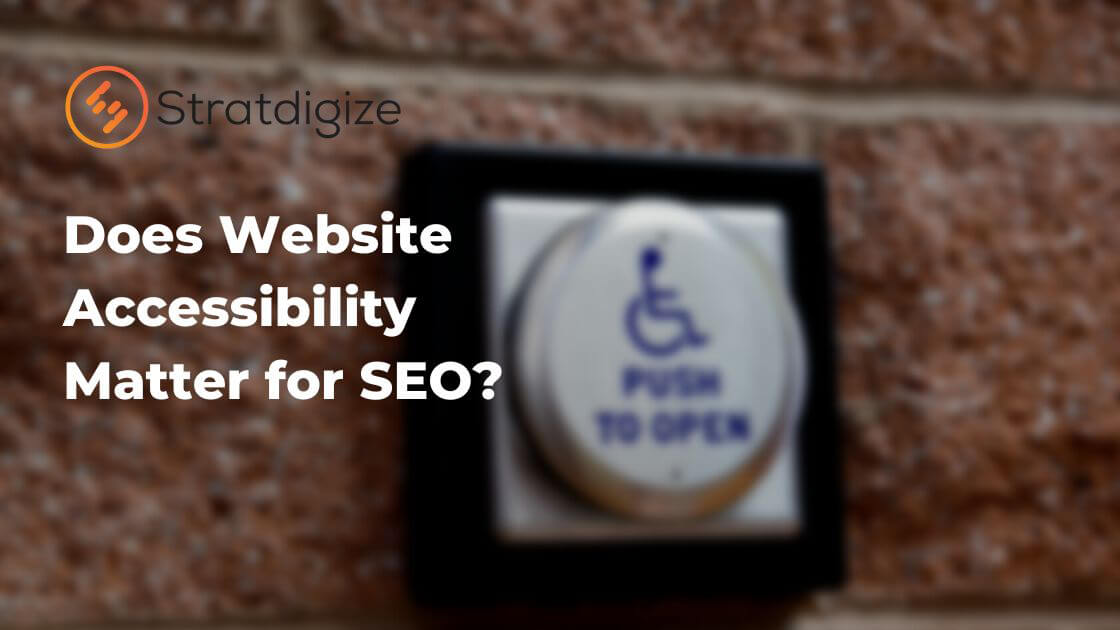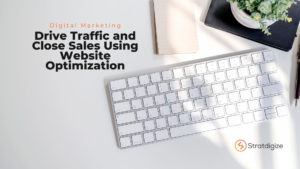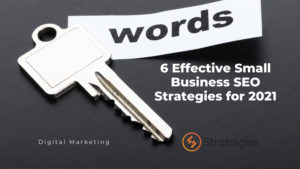At Stratdigize, we believe in making websites accessible to everyone.
Not only is it a legal requirement in many places, but it also has many benefits for users and website owners.
This article will explore the intersection between website compliance and SEO. As well as how improving accessibility can help enhance user experience and search engine rankings (SEO).
What is SEO Accessibility?
SEO accessibility means making websites easy to use for people with disabilities. This is accomplished by designing and developing them in a way that is accessible. It is also referred to as web accessibility or digital accessibility. This encompasses a wide range of disabilities that affect vision, hearing, movement, cognition, and aging.
In short, it is the act of making sure websites are accessible and usable for any user.
Besides individuals with disabilities, website accessibility can also benefit other groups of people. Older individuals may have age-related impairments that can make it more difficult to use websites.
Non-native speakers may also benefit from websites designed with clear and simple language. This can also make it easier for language interpretation tools.
By designing and developing websites with accessibility in mind, you can ensure that your website is usable by the largest possible audience.
Websites that are SEO accessible can be used by everyone, including people who use assistive technologies such as screen readers, voice recognition software, and alternative input devices.
What is ADA and WCAG compliance for websites?
ADA and WCAG are two essential guidelines for ensuring that websites are accessible. They are what most web compliance checkers refer to when validating your website.
The Americans with Disabilities Act (ADA) is a US law that prohibits discrimination against individuals with disabilities. ADA-compliant websites ensure that individuals with disabilities can access your website.
When Congress enacted the ADA, it expected changes would have to be made to keep up with the times. This has been clear with the Department of Justice’s (DOJ) stance that the ADA applies to web content. Thus it’s something that most website owners should consider.
Web Content Accessibility Guidelines (WCAG) is a series of technical guidelines developed by the World Wide Web Consortium (W3C). The latest version of these guidelines is WCAG 2.1.
The goal was to help make web content accessible to people with disabilities. The guidelines cover various accessibility issues, including text specifications, keyboard accessibility, and color contrast. The guidelines are organized into four main principles that provide the foundation of the framework: perceivable, operable, understandable, and robust. Each guideline is separated into three levels of conformance (A, AA, and AAA).
Failure to comply with web accessibility and SEO standards can result in legal penalties and damage your reputation from the poor user experience.
Why is Accessibility Important for SEO?
Google has exposed these factors through tools like Web Core Vitals, Page Experience, and Mobile Usability.
This trend by search engines has shown that they are considering more than just the information you provide but how you provide it to the user.
By making your website more accessible, you are improving the user experience for people with disabilities and thus making your website more user-friendly for everyone.
In addition, accessible websites tend to have better usability. This better user experience can lead to increased engagement and reduced bounce rates. This can increase users’ time on your website, leading to more conversions.
How to Improve Web Accessibility?
Improving Web accessibility requires a combination of technical and design changes. Here are some key ways to improve accessibility on your website.
1. Use Accessible Design Principles
Design is a crucial element for web accessibility. How a website is designed and developed can significantly impact its ability to be consumed by people with disabilities.
Specific designs may work great for the look and feel of your website, but when viewed by the visual impaired, it can be hard to read.
Key design considerations include:
- Use a clear and easy-to-read font that is responsive to screen size
- Use sufficient color contrast between text and background
- Provide adequate spacing between text and other elements
- Use clear and descriptive headings to show the intent of the content
- Provide alt text for all images and other media-based elements
Having a web accessible design not only improves your site’s ada and WCAG compliance it makes for a better user experience.
2. Use Properly Structured HTML Elements
- Put in place heading tags for structure and not as font size adjustments
- Lists should be used for structuring and ordering small chucks of content and not as design elements
- Use semantic markup to help identify crucial pieces of a website structure
3. Provide Alternative Content
Providing alternative content, such as captions for videos and transcripts for audio content, can make your web page more accessible to people with disabilities. This also benefits search engines, as they can crawl and index this content to improve search engine rankings.
4. Test and Monitor Accessibility
Regularly testing and monitoring your website for accessibility issues is crucial to ensuring it remains accessible to all users. However, it should be noted that testing tools will not be 100% accurate. These accessibility solutions are there to help you identify significant issues and get you closer to a more accessible website.
Tools and resources for testing accessibility include:
The Cross Section Between ADA And SEO
There is a significant cross-section between ADA/WCAG and SEO, as both aim to improve the accessibility and usability of a website.
Incorporating accessibility guidelines into your website can also improve the website’s SEO. For example, using descriptive alt text for images can make the content more accessible to users with visual impairments while strengthening the website’s relevance for related search queries.
Using clear and descriptive headings can improve the organization of the website’s content, making it more accessible to users with cognitive impairments and more search engine friendly.
Improving a website’s SEO6 Effective Small Business SEO Strategies for 2021 can also indirectly benefit its accessibility by making it more visible and discoverable to users with disabilities using search engines to find relevant information or services.
Conclusion
We believe accessibility is essential for creating a positive user experience and improving SEO. By making your website more accessible, you can reach a wider audience and provide a better user experience for all users. By following the tips and best practices outlined in this article, you can improve the accessibility of your website and enhance your search engine rankings.




